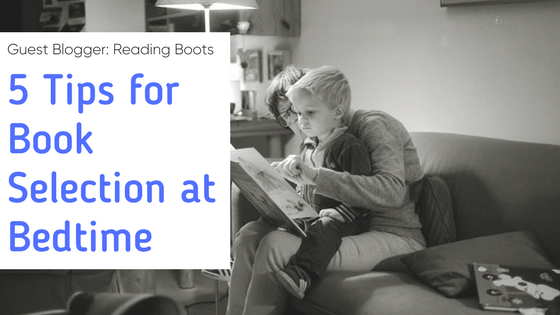This week I am excited to welcome Alyse Eligulashvili, M. Ed. as a guest blogger for Tandem Speech Therapy. She is the owner of Reading Boots in Austin, TX. Alyse is a reading expert whose mission is to educate as many parents as possible on how to elevate the read-aloud experience with their children and make book reading more meaningful.
Do you ever feel like you read the same five stories, on repeat, to your little ones at bedtime? Parents tell me that they feel this way all the time. I’m starting to experience it myself with my little one who is 11 months. Favorite books are special, they are comfortable, they are dependable, and just like fresh baked chocolate chip cookies, you’re never let down because you know exactly what you’re getting. While the comfort feels good, you can enhance your child’s read-aloud experience by encouraging him or her to branch out and experience a variety of texts. Who knows, your child might even enjoy oatmeal raisin cookies if given the opportunity to sample.
Here’s what you can do to introduce a new book to your little ones:

Add an element of surprise by moving books in interesting ways. During a read aloud, children have expectations that the book will be handled one way: right side up, left page to right page. To create surprise and interest, move the book in an unexpected way. This strategy works well with, “The Very Hungry Caterpillar” by Eric Carle. On the last page, the caterpillar turns into a butterfly. You can make the butterfly “fly” by holding the book up in the air and opening and closing the pages to make it look like the butterfly is flapping its wings. You can chant, “Fly butterfly, fly,” and encourage your child to join in.

Deepen your child’s interest in a particular topic by choosing simple nonfiction books. There is a nonfiction book out there for almost any interest your child may have. Learning more about a topic of interest will make your child feel like an expert and will add a new category of books to your child’s read aloud repertoire. Nonfiction books expose your child to different text features, like charts and labels, and introduce vocabulary words that are not used in daily conversation. “Hello, World!” is a great line of high interest, nonfiction board books. If you can’t find a basic nonfiction book on your child’s particular interest, write one! Print off some pictures and write facts about that topic.

Introduce your child to new characters, especially characters they can connect with. Children’s book characters are interesting and complex, just like your child. They experience a range of emotions, deal with conflict, and have their own unique personalities. When a child connects with a character, he or she will likely want to learn all about the character, opening up a whole new series of books for you to read with your child. Introduce your child to the characters you loved as a child, like Arthur the Aardvark or Clifford the Big Red Dog. Tell your child why you loved these characters and talk about them like old friends. You can also use this opportunity get to know newer characters, like Mo Willems’ Elephant and Piggie or Anna Dewdney’s Llama Llama.

Highlight the artwork in picture books during read-aloud time. Showcasing books with beautiful illustrations and talking about the pictures can nurture a child’s interest in art. You can talk about the illustrations in an artistic way by asking what colors he/she sees or what shapes he/she sees. You can also talk about how the pictures help tell the story. Ask your child what is happening in each picture before you read the story. This will help your child gain important background knowledge and increase his/her comprehension of the story. A favorite of mine is Don Wood’s, “The Napping House,” with its appealing drawings and visual details that bring the story to life.

Choose books that are interactive and encourage your child to participate. Young children learn by “doing.” They like to touch and feel, move their bodies, and explore the world around them. When children play an active role in read-aloud time, they are more engaged and are learning reading behaviors that will help them take ownership of the reading process as they gain more skills. Through their active involvement, children will also create positive associations with books and see reading as an enjoyable activity. Choose books with flaps, a variety of textures, and repetitive and predictable language. “Do Cows Meow?” by Salina Yoon, is a playful book that invites little ones to join in on the reading experience.
Following these tips will open your child up to a whole new world of books, and he/she just may add some new faves to the nightly reads. Get your Reading Boots on and enjoy the journey. Happy reading!

*The post contains Amazon Affiliate program links for Reading Boots.
About Alyse and Reading Boots
Alyse is a children’s reading enthusiast with over 12 years of teaching experience, working with beginning readers in public schools and private settings. As a reading expert, Alyse’s mission is to educate as many parents as possible on how to elevate the read-aloud experience with their children. Alyse founded Reading Boots to teach parents effective strategies, quick tips, and tricks of the trade to support the important role of parents in helping their children progress as readers. To stay up to date on the latest, follow Alyse at www.ReadingBoots.com! You can also find her amazing video blog series on YouTube.
Want to learn more?
Start Playing With Purpose
Learn how to purposefully and intentionally interact with your child during play and help them increase opportunities for speech and language development with our Playing with Purpose book!











